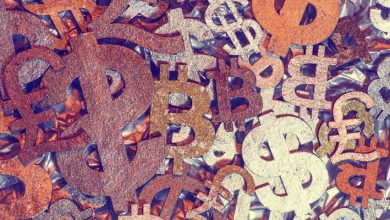The Evolution of Tokenization and Its Impact on Asset Ownership

- The Origins of Tokenization in the Digital Age
- The Rise of Tokenized Assets in Investment Strategies
- The Legal Implications of Tokenizing Real-world Assets
- The Role of Blockchain Technology in Tokenization
- The Benefits of Fractional Ownership through Tokenization
- The Future of Asset Ownership: Tokenization Trends and Forecasts
The Origins of Tokenization in the Digital Age
The concept of tokenization in the digital age has its origins in the rise of blockchain technology. This innovative technology allows for the creation of digital tokens that represent ownership of assets. These tokens are unique, indivisible, and can be easily transferred between parties. The ability to tokenize assets such as real estate, art, or even company shares has revolutionized the way ownership is recorded and transferred.
Tokenization provides a more efficient and transparent way to manage assets, as all transactions are recorded on the blockchain, providing a secure and tamper-proof record of ownership. This has opened up new opportunities for investors to diversify their portfolios and access previously illiquid assets. In addition, tokenization allows for fractional ownership, enabling smaller investors to participate in assets that were previously out of reach.
The rise of tokenization has also sparked interest among traditional financial institutions, who see the potential for increased liquidity and reduced transaction costs. As more assets become tokenized, the market for digital assets is expected to grow exponentially. This shift towards tokenization is reshaping the landscape of asset ownership, paving the way for a more inclusive and accessible financial system.
The Rise of Tokenized Assets in Investment Strategies
Tokenized assets have seen a significant rise in popularity in recent years as investors seek new ways to diversify their portfolios and access previously illiquid markets. This trend is driven by the increased adoption of blockchain technology, which allows for the digitization of assets and the creation of tokens that represent ownership rights.
One of the key benefits of tokenized assets is their ability to fractionalize ownership, allowing investors to buy and sell smaller portions of high-value assets. This opens up investment opportunities to a wider range of individuals who may not have had access to traditional asset classes. Additionally, tokenization can streamline the investment process, reducing costs and increasing transparency for investors.
Tokenized assets are also highly liquid, as they can be traded on secondary markets with ease. This liquidity can help investors quickly exit their positions or adjust their portfolios as market conditions change. Furthermore, tokenization can reduce the need for intermediaries in the investment process, cutting out unnecessary fees and delays.
Overall, the rise of tokenized assets in investment strategies signifies a shift towards a more efficient and inclusive financial system. By leveraging blockchain technology to tokenize assets, investors can benefit from increased liquidity, lower costs, and greater access to a diverse range of investment opportunities. As this trend continues to grow, it is likely that tokenized assets will play an increasingly important role in the future of asset ownership and investment.
The Legal Implications of Tokenizing Real-world Assets
When it comes to tokenizing real-world assets, there are several legal implications that need to be considered. One of the key issues is the regulatory framework surrounding tokenization. Since tokens represent ownership of assets, they are subject to existing securities laws and regulations. This means that issuers must comply with laws related to securities offerings, investor protection, and anti-money laundering.
Another important consideration is the transfer of ownership that occurs when assets are tokenized. Traditional asset ownership involves physical documents and legal contracts, but tokenization allows for ownership to be transferred instantly and securely through blockchain technology. This raises questions about how ownership rights are enforced and what legal recourse is available in case of disputes.
Smart contracts, which are self-executing contracts with the terms of the agreement directly written into code, also play a significant role in tokenizing real-world assets. These contracts automate the transfer of ownership and can help reduce the need for intermediaries. However, the legal enforceability of smart contracts is still being tested in courts, and there is uncertainty around how they will be treated under existing contract law.
The Role of Blockchain Technology in Tokenization
Blockchain technology plays a crucial role in the process of tokenization. By utilizing blockchain, assets can be represented digitally through tokens, which are then stored and transferred securely on a decentralized ledger. This technology ensures transparency, immutability, and security, making it an ideal solution for tokenizing assets.
One of the key advantages of using blockchain for tokenization is the ability to fractionalize assets. This means that high-value assets, such as real estate or fine art, can be divided into smaller, more affordable tokens. Investors can then purchase these tokens, allowing for greater accessibility to a wider range of assets.
Furthermore, blockchain technology enables the automation of various processes, such as asset transfers and ownership verification. Smart contracts, which are self-executing contracts with the terms of the agreement directly written into code, can be utilized to streamline these processes. This reduces the need for intermediaries, thereby lowering costs and increasing efficiency.
The Benefits of Fractional Ownership through Tokenization
Fractional ownership through tokenization offers a range of benefits that make investing in assets more accessible and efficient. By dividing assets into smaller tokenized fractions, individuals can invest in high-value assets such as real estate, art, or collectibles without the need for a large capital outlay. This democratization of asset ownership allows for greater diversification in investment portfolios, reducing risk and increasing potential returns.
Furthermore, fractional ownership through tokenization provides investors with increased liquidity, as tokens can be bought and sold on digital asset exchanges at any time. This flexibility enables investors to exit their positions quickly, unlike traditional ownership models where assets are illiquid and difficult to sell. Additionally, tokenization reduces the barriers to entry for investors by eliminating the need for intermediaries such as brokers or custodians, resulting in lower fees and faster transaction times.
Moreover, fractional ownership through tokenization offers increased transparency and security for investors. The blockchain technology underlying tokenization ensures that ownership records are immutable and tamper-proof, providing a high level of trust and accountability. Smart contracts embedded in tokens automate the execution of ownership rights, such as dividends or voting rights, eliminating the need for manual intervention and reducing the risk of fraud or error.
Overall, fractional ownership through tokenization represents a significant evolution in asset ownership, offering investors a more accessible, liquid, transparent, and secure way to invest in a wide range of assets. As the adoption of tokenization continues to grow, more investors are likely to benefit from the advantages it provides, reshaping the landscape of asset ownership in the digital age.
The Future of Asset Ownership: Tokenization Trends and Forecasts
The future of asset ownership is rapidly evolving with the rise of tokenization trends and forecasts. Tokenization is revolutionizing the way assets are bought, sold, and traded by digitizing them into tokens that can be easily exchanged on blockchain platforms. This shift towards tokenization is expected to have a significant impact on traditional asset ownership models, opening up new opportunities for investors and businesses alike.
One of the key trends in tokenization is the increased liquidity it provides for assets. By tokenizing assets, they can be divided into smaller units, making it easier for investors to buy and sell fractions of assets. This increased liquidity can attract a wider range of investors to the market, driving up demand for tokenized assets.
Another trend in tokenization is the democratization of asset ownership. Through tokenization, assets that were once only accessible to a select few are now available to a broader audience. This democratization of asset ownership can help to reduce inequality and create a more inclusive financial system.
Looking ahead, forecasts suggest that the tokenization market will continue to grow rapidly in the coming years. As more assets are tokenized and new tokenization platforms are developed, the market is expected to expand and mature. This growth will likely lead to increased adoption of tokenization across various industries, further reshaping the landscape of asset ownership.
Overall, the future of asset ownership is bright with the advent of tokenization. By embracing this technology, investors and businesses can take advantage of increased liquidity, democratized ownership, and a growing market for tokenized assets. As tokenization trends continue to evolve and forecasts point towards continued growth, now is the time for stakeholders to explore the benefits of this innovative approach to asset ownership.



